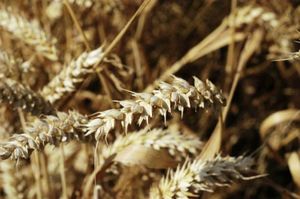Defining IEHIAS stakeholders: example from agriculture
- The text on this page is taken from an equivalent page of the IEHIAS-project.

Because everyone eats food, and because in the modern world foodstuffs are distributed across huge areas, any issue relating to agriculture ultimately affects a large and scattered range of consumers. The complexity of agricultural land use and food production systems also means that many different organisations have commercial or regulatory interests in farming and its possible health effects. All these need to be considered as potential participants in the assessment.
| Type/role | Examples | Interest/role |
|---|---|---|
| Farmers and their agents | Land owners, farm workers, unions, farmers’ associations | Victims of exposure; risk management and reduction; potential victims/beneficiaries of risk response (e.g. loss of income) |
| Agricultural suppliers and services | Seed suppliers, pesticide manufacturers, fertiliser manufacturers, transport companies | Risk management and reduction; potential victims/beneficiaries of risk response |
| Food distributors and processors | Food wholesalers and retailers, transport companies | Potential victims/beneficiaries of risk response |
| National/regional health protection agencies | Public health institutions, food standards agencies, occupational health and safety agencies, local/regional health boards and environmental health departments | Risk management and regulation; risk communication |
| National/regional environmental protection agencies | Ministries of environment, environmental regulatory agencies, local authorities | Risk management and regulation |
| European and international agencies | European Commission (Directorates for Agriculture, Environment, Health); WHO, FAO | Risk management and regulation; risk communication |
| NGOs | Pesticide action groups, organic farming groups, animal welfare groups | Risk communication; representatives of victims of exposure; lobbyists for action |
| Others | 1) Rural residents; 2) National and local media ; 3) Scientists (epidemiologists, toxicologists, environmental scientists) | 1) Victims of exposure; 2) risk communication; 3) risk analysis, risk communication, potential beneficiaries of risk |